I think there are only two things hard about running a tech blog: to get started and to keep going.
From what I hear around me, people are often interested in having their own blog. And I believe it is a great way to share your knowledge, experience or learning path. Especially in the current global situation, where it is harder to find each other in person, a blog is a low threshold way to share with others.
This is part two of my blog posts on running your own tech blog. In the previous post, I wrote about how you can start your own blog.
In this post, I will give my tips and tricks on how you can keep going.
But why
Ever since internet became a thing, I started several web projects. Personal blogs, music websites, joke websites, song translation blogs, I’ve tried them all and quit them all after some time. I think a lot of people might recognize the feeling. When you start out, you have the rush of starting something new, which can give a lot of motivation. This might even last a few months, but after that, there is a high risk of losing motivation and abandoning the project.
4bes.nl has been running for over two years now. So what was different? I made a more conscious decision this time to be in this for the long run. It took some trial and error, but I got it going. In this post, I want to share my tips and tricks on running a tech blog: Keep going.
Find your flow
To keep blogging, you need to find a flow that works for you. Now that sounds a bit vague, but there are some pretty concrete measures you can take. The goals is more or less to make blogging as relaxing and low-effort as possible, so you have less trouble to keep up.
Find your blog style
When you write blog posts, there are a lot of different styles you can use. While I’m not saying you need to choose one style and stick to it, you will probably experience that there are posts that take less effort to write for you than others.
When I talk about styles, these are some examples:
- Large step-by-step guides
- A solution for a specific problem
- A tip or trick: short posts with something you want to share
- Large posts with lots of text (like this one)
- Scripts with a little bit of information about what the script does
There is no correct answer to what blog post style is the best, but you will find some post style fits you better than others.
For me, I like to write extensive posts and while I never keep track, if I look back at all my posts they are mostly between 1500 and 2000 words. So that is a length that works for me. I love writing step-by-step guides with a lot of screen shots, which you will see a lot on my blog.
As this kind of posts come naturally to me, they cost less effort to write than for example a post like this one. While I like writing a post like this one, that is very text heavy, I do feel it takes me more effort and it’s harder to get started with writing the post for me. So if I were to only write these lengthy posts, I would have quit a long time ago if it was the only thing I did.
The tip here is to experiment with style and length to find what you are most comfortable with.
Manage you time
There is really no way around it: Blogging costs time. There is a chance that you can fit this in in your regular workschedule, but more often than that you have to do it in your own time. And that is time you need to have available. It can help to think a little bit about how much time you have to spare. If it isn’t much, that doesn’t mean you can’t run a blog. It does mean you might have to focus on smaller posts or blogging less often.
When you start writing, you will find out how much time a typical post costs you. My blog posts cost me on average about 8 hours for the whole process, including research. This is almost never in one time block, but spread out through the week. With that information, I could think of how often I am able to write posts.
Create a schedule
When you know how much time you need for a blog post, I recommend creating a bit of a schedule for yourself. In my experience, it really helps me to have a schedule as a starting point. You can test how strict you need to be for yourself to keep the flow going. Below, you can see a chart I made some time ago where I show how many days were in between blog posts through time.
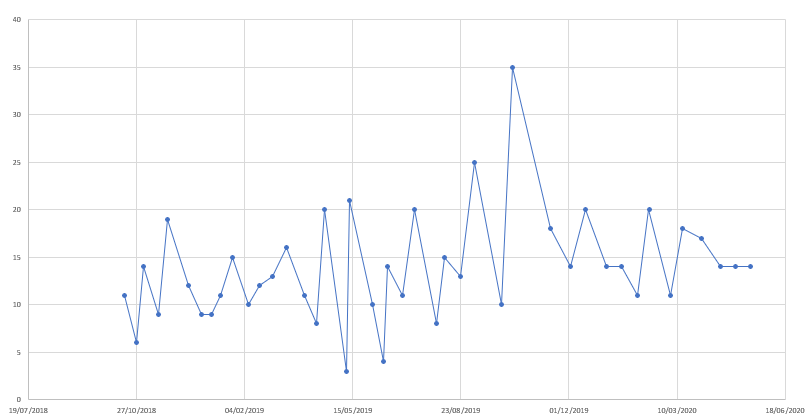
As you see, the average time between two posts will be somewhere around 14 days. With the last posts being at exactly 14 days. The least amount of days was about 3, the most were 35. So sometimes I post a little more, sometimes I give myself some slack. The 35 day break for example was around MSIgnite 2019, when I was busy preparing to speak there.
So the take away here is to find an interval that works for you. This means your posts are not so close together you get overwhelmed, but also not so far apart that you procrastinate away from blogging because it is not on your mind.
Find inspiration
A challenging part of blogging consistently can be that you have to actually have something to write about. How do you find inspiration, what are your topics? I have used some tricks to keep myself motivated with things to write about.
Find your niche
This step you might have thought about already when you started, or you are like me and never even considered is. To get some consistency in your blogging and find your inspiration, it helps to think about your niche. What is the subject that your blog is about? This can be very broad, or very specific. Consider the subjects listed below.
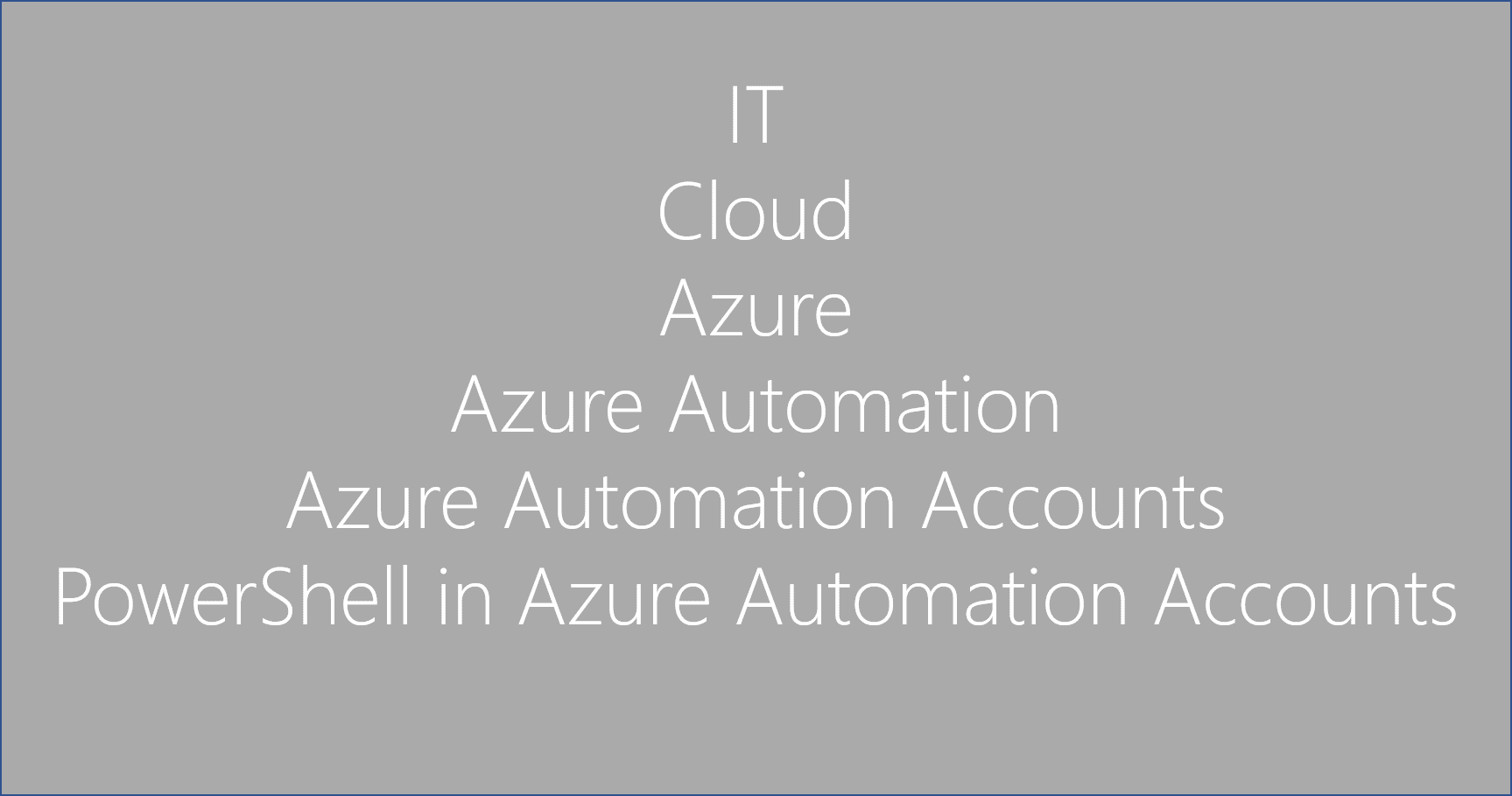
These are broad and narrow descriptions of a niche. You can think about what option works best for you. If your niche is “IT”, you might get lost as there are too many possibilities. But you would focus on just PowerShell in Azure Automation Accounts, you will be done writing pretty quickly.
The right niche can help you with finding subjects for your blog posts and giving your blog an identity. It is good to think about it. I have build my blog around the niche Azure and Automation, which works for me. Then again, this post is a great example of a subject that is way out of my niche. So nothing is written in stone.
Look around you
If you are lucky, inspiration is all around you. If at all possible, It can really help to write about things that come on your path in your daily work. This can be tricky if the focus of your blog is on something else than your job. And you have to be careful to talk to your employer about using subjects from your work, as it might not be appropriate. But if you can work that out, this can give some great help to find subjects to write about.
If you can’t get your inspiration from work, than it helps to keep your eyes open to find inspiration. Personally, I write the drafts of all my blog posts in my OneNote. Every time I come across something I want to write about, I quickly create a new page and add it as a title. So when someone asks me something that could make a post, when I fix something that I think might be of use for others, when I hear about new technology I want to write about, it all becomes an item in my OneNote. Whenever I’m not sure what to write about, I take a look at my list and often will find something I can still write about.

An example of where I made use of the situation was when I was on a holiday in 2019. I took some time off between jobs and then realized I would not have a laptop for my trip, as I have a desktop at home. While thinking about my options for the blog, I remembered I always bring my iPad. So there was my blog post!
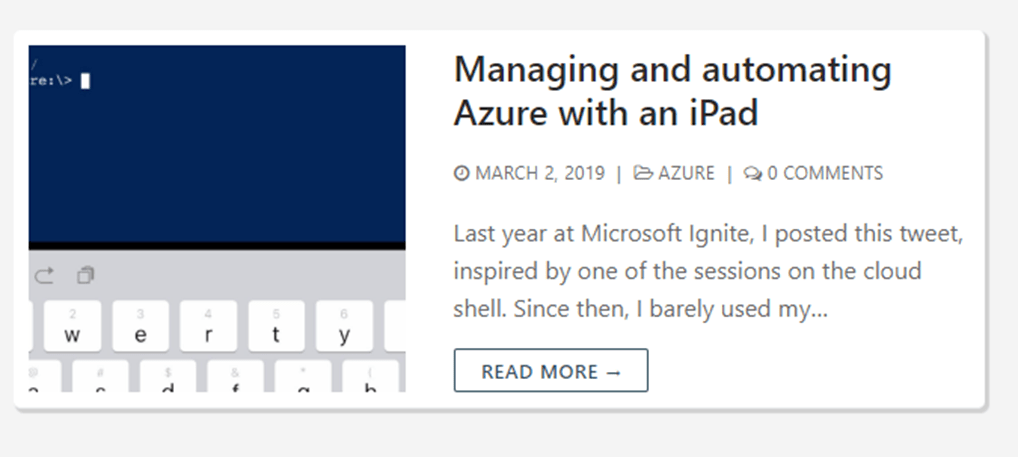
Work in series
Something I do a lot, is work in series. I write two (or more) blog posts that are related to each other. The ideas for them often come up at the same time and it gives me two posts to write instead of one. An example is when I wanted to write about sending emails from PowerShell. I found two methods in Azure and wrote a post about both of them. The one that wasn’t my primary idea actually got way more hits then the first one.
If you scroll through my blog you will find heaps of related posts. It helps with the writing ideas, but it also helps people who read my blog to consider other options or learn more on a subject.
The post you are reading now is also an example of a series. Main reason for this one is that I think it is far to long for one post. But it still made it possible to have one idea last me two posts.
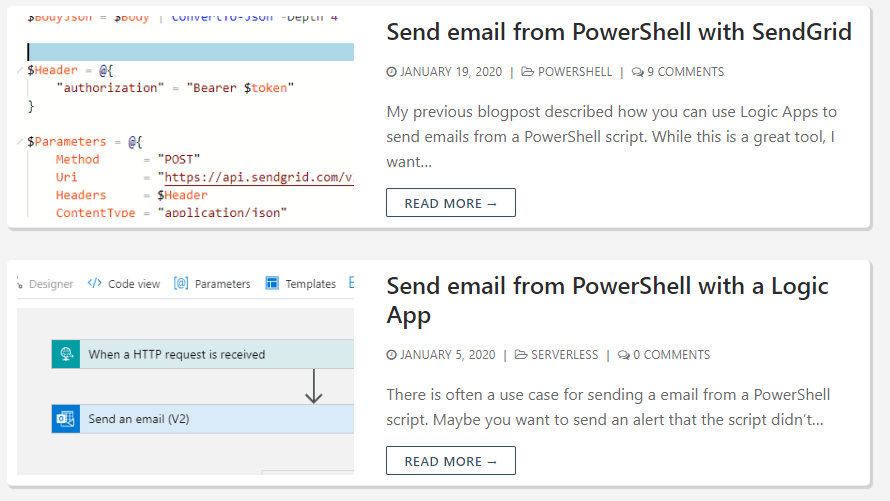
Have fun with promotion and your stats
One last thing that can help with keeping motivated is to have a look at your stats. It is a great feeling to see your blog grow. I had fun with finding the best times to post updates on Twitter or LinkedIn, seeing where my visitors were coming from and finding out what posts are most popular.
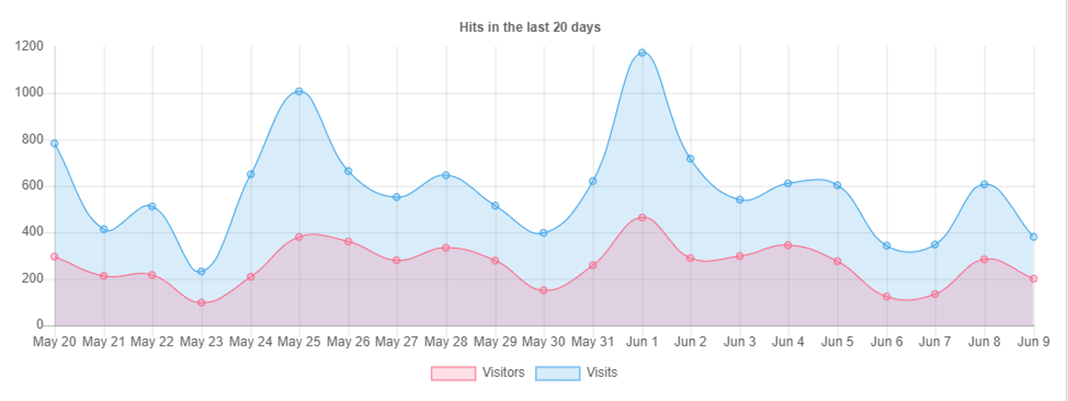
And talking about great feelings: It is so awesome to get responses that show that people have made use of your blog. Comments on blog posts, but also tweets that mention the blog, personal messages and being in newsletters. To me, it felt like the blog was becoming something bigger than just my personal space on the internet. I remember when someone from Microsoft first created a shortlink for one of my posts, it felt pretty special (even saved the link: msft.social/HuXKbp ? ).
Another thing I really love is when I meet people in real life and they comment on making use of my blog. It makes all the time spend absolutely worth it. This is where I also like to say: If a post on any blog has really helped you, leave a comment! I know I don’t do it often enough, but I also know how happy the comments make me.

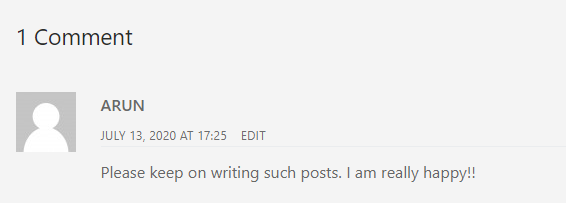
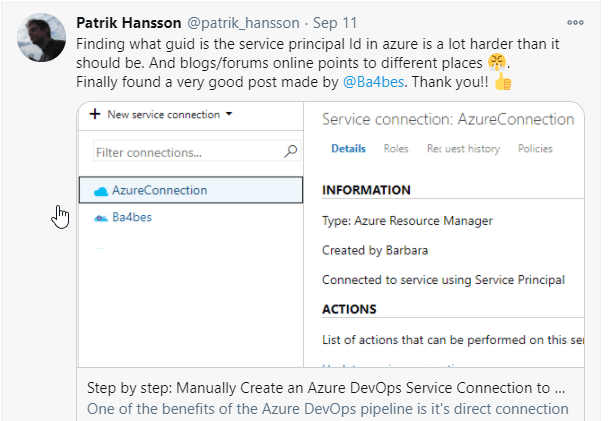
Keep dealing with imposter syndrome
Finally, I want to mention imposter syndrome, as so many people are familiar with this feeling. To get started, you probably had to overcome imposter syndrome. In my experience, you are not done with imposter syndrome after the start. You will get more readers, maybe more attention, maybe you could even say a reputation. And imposter syndrome will still be coming back. This is not meant to scare you, but to prepare you that if you had imposter syndrome at the start, you will probably keep dealing with it. And it’s ok. The good news is that it will probably get a bit easier, especially if you keep posting and if you keep talking about this with someone you trust.
Conclusion
Running a blog with consistent posts can be very challenging and it does cost time. But it’s also a very fulfilling experience and a great way to make a name for yourself. I hope these tips can help you feel like you are able to keep going after the starting fase is done.
One thing that helped for me a lot was asking my readers what they want to see next, that, combined with a huge dose of being a nerd helps keeping the blogs coming. 🙂 Great read Barbara, Thanks.
That is a great tip, really helps with interacting with your readers as well.
Thank you Kelvin!
Great overview on motivation, thank you. Came to check about Git, VS Code and PowerShell, was interested in blogging to be more expressive of what I’ve learnt, share my findings.
Plus, it seems to have a potential on keeping me focusing on my usual work.
Thanks, and Cheers!
Love to see someone making life easier for folks. Great blog, Barbara. Keep up the great work.
Thanks for sharing such nice post. I’m looking forward to share it to my friends. Keep sharing such posts furthermore. Thanks!
I don’t know how I reach here but really like your site and effort to provide useful information, going to bookmark your site and keep checking for more information.
Also, visit my website and share your thoughts:
Backlinko Blog
Thank you for sharing this blog. It Motivates people to write tech blogs and it can also be a good way to start your career in tech blogging.